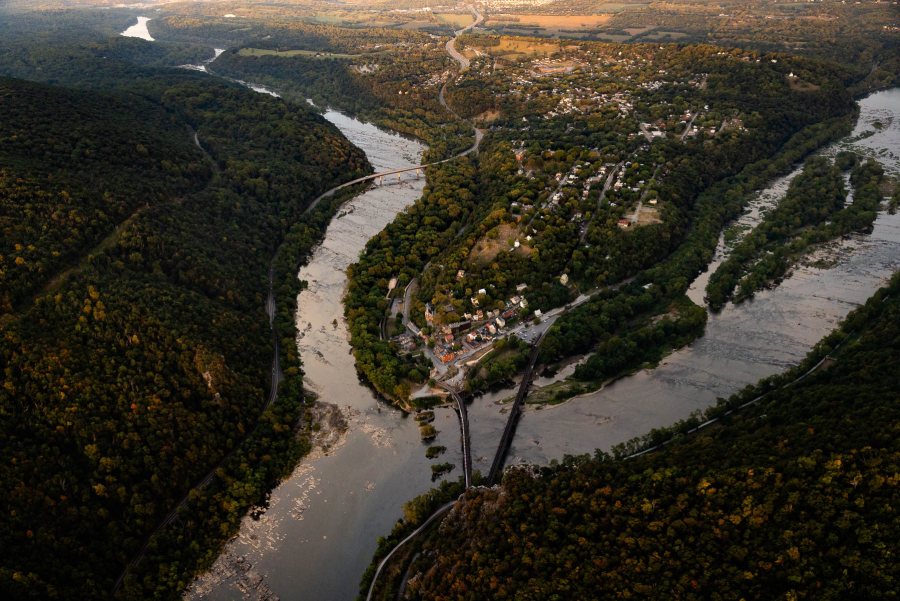Recent data show a slight dip in the Chesapeake Bay’s water quality
Monitoring stations across the watershed show mixed results in the amount of pollution measured

During 2019-2021, Chesapeake Bay Program experts from the U.S Geological Survey (USGS), University of Maryland Center for Environmental Science (UMCES) and the Environmental Protection Agency (EPA) determined that the Bay and its tidal tributaries experienced a slight decline in water quality, only meeting 28.1% attainment.
The Water Quality Standards Attainment and Monitoring Outcome is updated annually, reflecting a two-year assessment period. This most recent update reflects data and information from 2019-2021. Our experts believe that our water quality percentage declined in part due to lingering impacts from heavy rainfall our region experienced back in 2018 and 2019. Heavy rainfall can bring excess pollutants flowing into the Bay. Additionally, it can impact the salinity levels of the Bay, causing critters like oysters and blue crabs, who thrive in salty waters, to move further south. In 2019, the Chesapeake Bay recorded the largest amount of freshwater flowing into the Bay than in the past 82 years.
The water quality in the Chesapeake Bay is measured by three factors–chlorophyll a, dissolved oxygen and water clarity. Chlorophyll a measures the amount of algae growing in a particular body of water. If there is too much algae in the water, it can decrease the amount of dissolved oxygen in the water, which many Bay plant and animal species are dependent on for survival. When there is not enough dissolved oxygen in the water, hypoxic areas form, which are more commonly referred to as dead zones, because life often cannot survive there.
Water clarity is measured by the abundance of underwater grasses observed in the Bay. Underwater grasses, otherwise known as submerged aquatic vegetation (SAV), need sunlight to grow. When the water is clear, sunlight can penetrate the water’s surface and reach the SAV on the Bay’s bottom. When the waters are cloudy with sediment, algae or other types of pollutants, sunlight is often unable to reach the grasses and help them grow.
However, these three factors are only part of how the annual update for the Water Quality Standards Attainment and Monitoring Outcome is determined. Our experts also look at the total amount of nitrogen, phosphorus and sediment pollution entering the Chesapeake each year, based on data coming from monitoring stations located on the nine largest tributaries of the Bay. These River Input Monitoring (RIM) stations monitor approximately 80% of the pollution entering the Bay from around the watershed. The remaining 20% is estimated from nitrogen and phosphorus levels collected in water samples from wastewater treatment plants, computer-simulated estimates of nitrogen and phosphorus pollution from nonpoint sources (e.g., rainfall and runoff) and computer-simulated estimates of nitrogen falling from the atmosphere onto tidal waters.
Findings from the most recent USGS analysis of 10-year trends (2012-2021) at the nine River Input Monitoring stations showed the following:
Trends in nitrogen are improving at four stations (James, Patuxent, Potomac and Susquehanna), degrading at four stations (Appomattox, Choptank, Mattaponi and Rappahannock) and no trend was noted at the Pamunkey River station.
Trends in phosphorus are improving at six stations (James, Mattaponi, Pamunkey, Patuxent, Potomac and Susquehanna), degrading at two stations (Appomattox and Choptank) and no trend was noted at the Rappahannock River station.
Trends in sediment are improving at four stations (Pamunkey, Patuxent, James and Susquehanna), degrading at three stations (Appomattox, Choptank and Mattaponi) and no trend was noted at the Potomac and Rappahannock river stations.
In addition to the RIM stations, our scientists monitor a vast non-tidal monitoring network of 123 stations spanning the 64,000-square-mile watershed. This information also provides short-term (i.e., 10 years) and long-term (i.e., since 1985) trends about the amount of pollution entering the Chesapeake Bay, allowing for experts to assess how rivers and streams are responding to best management practices being put into place to reduce nitrogen, phosphorus and sediment from agricultural and urban areas.
The USGS found mixed results when assessing the 10-year trends (2011-2020) from the non-tidal monitoring network:
Thirty-eight percent of stations showed an improvement in the amount of nitrogen, whereas 42% are degrading and 20% showed no change.
Forty-four percent of stations showed an improvement in the amount of phosphorus, whereas 23% are degrading and 33% show no change.
Nineteen percent of stations showed an improvement in the amount of sediment, whereas 46% are degrading and 45% showed no change.
Please visit our ‘Help to Protect the Bay’ website for tips on how you can help keep the waters in your backyard and the Chesapeake Bay healthy. For the most up-to-date information on the Bay’s water quality, please visit ChesapeakeProgress.

Comments
There are no comments.
Thank you!
Your comment has been received. Before it can be published, the comment will be reviewed by our team to ensure it adheres with our rules of engagement.
Back to recent stories